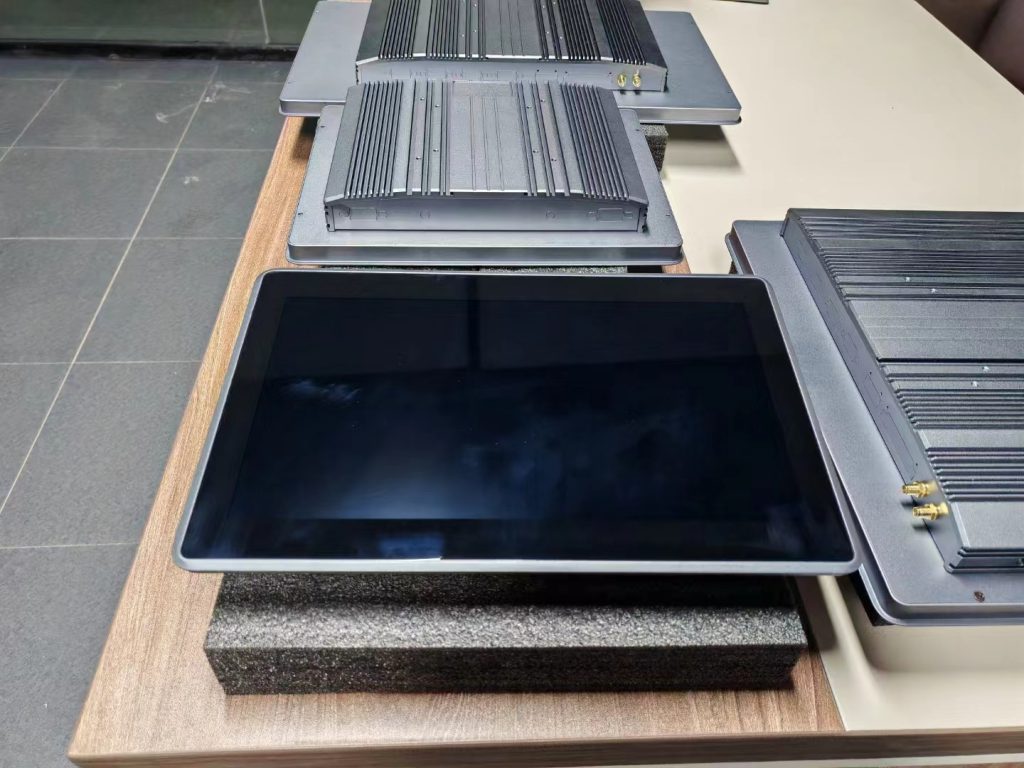By Jack | 6-Minute Read
What is an Industrial PC (IPC)?
An Industrial PC (IPC) is a purpose-built computing system engineered to operate reliably in extreme industrial environments, including high temperatures, dust, humidity, vibration, and electromagnetic interference. Unlike commercial desktops, IPCs feature fanless cooling, ruggedized metal chassis, and industrial-grade components to deliver 24/7 performance in automation, robotics, energy management, and IoT edge applications.

3 Core Advantages of Industrial PCs
- Military-Grade Durability:
- Wide operating temperature (-40°C to 85°C)
- IP65/IP67-rated protection against dust and water ingress
- 50G shock resistance and 5Grms vibration tolerance
- Unmatched Reliability:
- MTBF (Mean Time Between Failures): 100,000+ hours
- EMI/EMC-certified for electrical noise immunity
- Redundant power inputs (9-36V DC)
- Industrial Connectivity:
- Legacy ports (RS-232/485, CAN bus)
- High-speed interfaces (PoE+, USB 3.2, 10G Ethernet)
- Modular expansion (PCIe, GPIO, M12 connectors)
Industrial PC vs. Commercial Desktop: Critical Differences
| Feature | Industrial PC | Commercial Desktop |
|---|---|---|
| Cooling System | Fanless, passive heat dissipation | Fan-dependent |
| Component Lifespan | 10+ years (industrial-grade parts) | 3-5 years (consumer-grade) |
| Environmental Rating | IP65/IP69K dust/waterproof | No certification |
| Shock/Vibration Resistance | MIL-STD-810G compliant | Office-grade stability only |
Why Commercial Computers Fail in Industrial Settings
- Dust Accumulation: Cooling fans in desktops draw dust, causing overheating. IPCs use ventless designs with aluminum heat sinks.
- Moisture Damage: Standard USB/HDMI ports corrode. IPCs utilize sealed M12 connectors and conformal-coated PCBs.
- Power Instability: Industrial PCs support wide-voltage inputs (12-36V DC) to handle surges common in factories.
Key Components of a High-Performance Industrial PC
1. Processor Architecture
- x86-based IPCs (Intel® Core™ i5/i7): Ideal for machine vision, AI inference, and SCADA systems.
- ARM-based IPCs (NXP i.MX8): Low-power solutions for edge gateways and IIoT sensors.
2. Mission-Critical Interfaces
- 4x Gigabit Ethernet with TSN (Time-Sensitive Networking)
- 8x GPIO for PLC/sensor integration
- Dual SIM slots for 4G/5G cellular backup
3. Industry-Specific Customization
- Food & Beverage: Stainless steel housing + IP69K washdown protection.
- Oil & Gas: ATEX-certified explosion-proof models.
- Transportation: DIN-rail mounting + ignition power control.
Panel PC vs. Box PC: Which Industrial Computer Fits Your Needs?
Panel PCs
- Best For: Human-Machine Interface (HMI), control panels, pharmaceutical monitoring.
- Features:
- 15″-24″ sunlight-readable touchscreens
- NEMA 4/12-rated front bezels
- Integrated PLC communication protocols (Modbus TCP, PROFINET)

Box PCs
- Best For: Space-constrained automation, edge computing, robotic controllers.
- Features:
- Ultra-compact design (100x100mm)
- Dual hot-swappable SSD trays
- -40°C cold-start capability
5 Rules for Choosing the Right Industrial PC
- Prioritize Environmental Ratings: Match IP ratings to your facility’s dust/moisture levels.
- Future-Proof Connectivity: Ensure 20% spare I/O capacity for upgrades.
- Validate Certifications: Look for UL 60950-1, CE, and ISO 9001 compliance.
- Demand Long-Term Support: Choose vendors offering 5+ years of OS/security updates.
- Test Real-World Performance: Benchmark under simulated load (e.g., -30°C startup + 90% CPU utilization).
